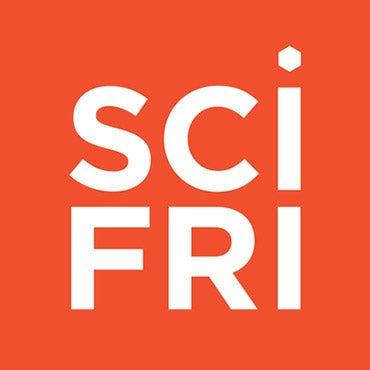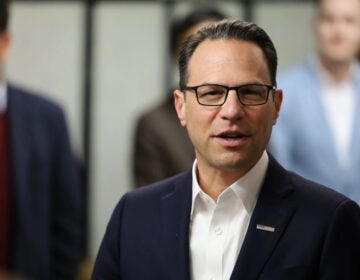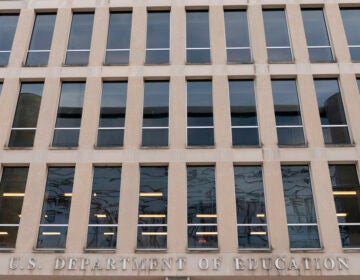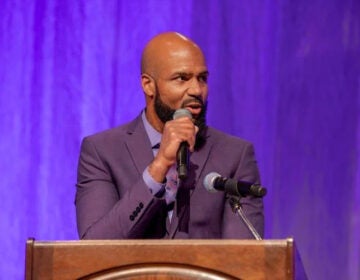Federal student loan forgiveness reaches 44,000 Pa. teachers and other public service workers who will receive debt forgiveness topping $3.2 billion since 2021 for Pa. borrowers
More than $4.5 billion in new student debt relief will help thousands of teachers, firefighters, nurses and other public service workers.
Listen 1:28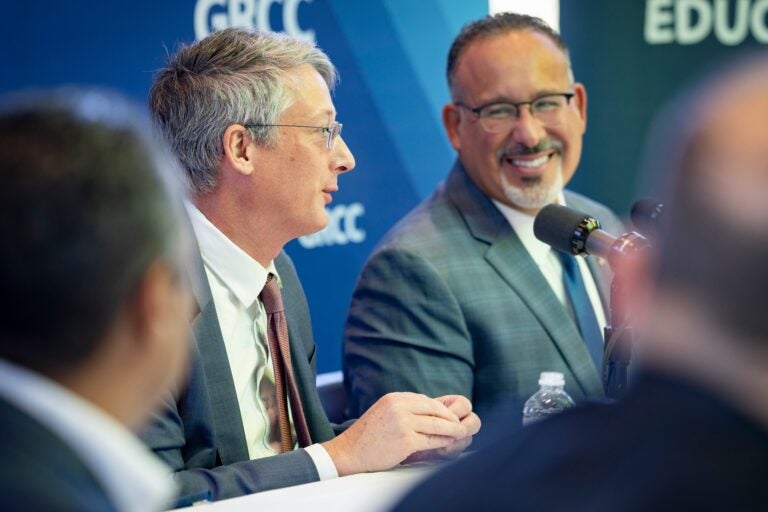
Secretary of Education Dr. Miguel A. Cardona and Under Secretary James Kvaal from the Department of Education speaks at a student loan forgiveness event. (U.S. Department of Education)
From Philly and the Pa. suburbs to South Jersey and Delaware, what would you like WHYY News to cover? Let us know!
Thousands of Pennsylvania student loan borrowers will finally have their loans forgiven after the latest effort from the Biden-Harris administration to help eliminate their debt in exchange for their years of public service. The latest loan forgiveness effort from the Department of Education brings the total number of those who have had their loans forgiven through the Public Service Loan Forgiveness (PSLF) program to 44,150. All together, nearly $3.2 billion in loans have been forgiven for borrowers in Pa. via PSLF.
The program was created by Congress in 2007 to recognize the critical role public servants play in local communities. Under Secretary of Education James Kvaal said they are the ones who need it most. “These are teachers, first responders, service members. You know, people that are spending their careers giving back to their communities and to our country,” he said.
In an announcement last week, the administration touted another $4.5 billion in total student loan relief which was approved through PSLF for approximately 60,000 borrowers across the country. The total loan forgiveness approved by the administration is more than $175 billion for more than 4.8 million Americans, which includes more than $73 billion for over one million borrowers through PSLF.
The student debt forgiveness program has had a long road to fruition for many who have dealt with a long list of challenges. The program forgives the remaining student loan balances for those who qualify and make the required 120 monthly payments. But many student borrowers complained for years about not being able to access their loan servicers, which made it difficult to prove how much they paid and how many payments were made on their loans.
The Department of Education admits borrowers also complained they spent years in the wrong student loan repayment plan or did not take out the right type of loan and were therefore ineligible for PSLF. Those borrowers were denied forgiveness even after they entered public service and made the required payments.
Secretary of Education Miguel Cardona said the sales pitch that borrowers could “spend ten years serving the common good and you can be debt free” was a “simple idea, but decades later that promise was broken.“ Cardona blasted the Trump administration, saying, “Americans acted in good faith, paid loans while working in the public sector but instead of fixing public loan forgiveness my predecessor was more focused on handouts for predatory for-profit colleges.”
Now, the Department of Education hopes to right the wrongs and enable more public service workers to take advantage of the new process. “One of the challenges we had when we started on this project is winning back people’s trust,” said Kvval who noted the number of loan forgiveness has drastically increased since the Trump administration. “At the start of the Biden-Harris administration, only 7,000 people had ever gotten public service loan forgiveness; there was a 99% rejection rate.”
Earlier this year, veteran Philadelphia teacher Michelle Gibbs shared her story of drowning in $80,000 in student loan debt and being unable to get a reprieve because her loan servicers were constantly changing. Ultimately, she was able to get her loans forgiven through PSLF in March of 2023.
Gibbs isn’t alone. Many teachers feel the pinch when it comes to student loan debt. Earlier this school year, Elevate 215, a non-profit organization that serves as the organizational convener of the Philadelphia Citywide Talent Coalition, revealed a majority of teachers they surveyed are affected by debt. Of the 734 public school teachers surveyed, 89% had or currently have at least $50,000 in student loan debt.
“For somebody new into the field and trying to sustain quality of life while paying back the work they put in to get into the [teaching] profession … it is a barrier for them to continue in [education],” said David Saenz, Elevate 215’s director of communication.
That widespread student loan debt has led to a high attrition rate for teachers across the commonwealth who are leaving the industry. It’s also reduced the number of new teachers who pursue a career in education at all.
“This is a big issue I hear from a lot of teachers,” said Kvaal. “Oftentimes, they have a lot of student debt from going to college or even getting a masters degree, and teaching of course is not a very high paid profession.”
He hopes this debt relief effort will help ease those concerns and keep teachers in the classroom and heroes working in the community. “There are people that take out student loans that go on to graduate, get high paying jobs and student loans are a great investment in financial terms. But for people who go into public service, they need a little help. And so that’s why it’s so important that we have these programs working as intended.”
The Biden-Harris administration is also working with a number of public sector unions to assist their members with the process. The American Federation of Teachers (AFT), National Education Association (NEA), American Federation of State, County, and Municipal Employees (AFSCME), and the Service Employees International Union (SEIU) will offer incentives to members.
Borrowers can apply for the program through StudentAid.gov, and also use the website to check their status or track their progress toward forgiveness.

Get daily updates from WHYY News!
WHYY is your source for fact-based, in-depth journalism and information. As a nonprofit organization, we rely on financial support from readers like you. Please give today.

